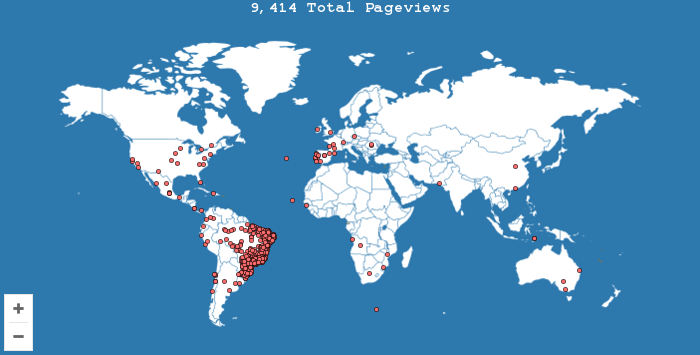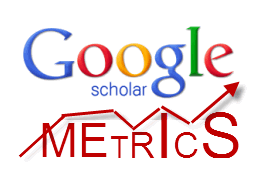School inclusion of students with autism spectrum disorder (ASD): UDL contributions to overcoming segregation at school
DOI:
https://doi.org/10.31496/rpd.v24i49.1593Keywords:
school inclusion, ASD, universal design for learningAbstract
This article assumes the equalization of educational opportunities demanded by the inclusion paradigm. Based on the partial results of two master's researches in education whose focus is inclusive education, it aims to present an integrative review on the processes of school inclusion of students with ASD, putting teaching for all and UDL in perspective. On the one hand, the results have pointed to the important presence of the medical model of disability in school units, something reported both by scholars on the subject and by the report of a literacy teacher who works in a classroom where there are students with and without ASD. On the other hand, the integrative review also showed the relevance of the UDL principles when seeking to overcome the segregation and exclusion of students with ASD.
Downloads
References
BRASIL. Constituição de 1988. Constituição da República Federativa do Brasil. Brasília, DF: Senado Federal, 1988.
BRASIL. Ministério da Educação. Secretaria de Educação Especial. Política Nacional de Educação Especial na Perspectiva da Educação Inclusiva. Brasília: Ministério da Educação; SEESP, 2008.
BRASIL. Lei de Diretrizes e Bases da Educação Nacional. Lei nº 9.394, de 20 de dezembro
de 1996. Brasília: Presidência da República, 1996.
BRASIL. Diretrizes Nacionais para Educação Especial na Educação Básica, Resolução nº 02/ 2001. Brasília: Ministério da Educação, 2001.
BRASIL. Presidência da República. Casa civil. Decreto nº 5.296 de 2 de dezembro de 2004. Brasília: Presidência da República, 2004. Disponível em: http://www.planalto.gov.br/ccivil03/ato2004-2006/2004/decreto/d5296.htm. Acesso em: 14 jun. 2021.
BRASIL. Presidência da República. Casa civil Decreto nº 7.611, de 17 de novembro de 2011. Brasília: Presidência da República, 2011. Disponível em: http://www.planalto.gov.br/ccivil03/ato2011-2014/2011/decreto/d7611.htm Acesso em: 14 fev. 2021.
BRASIL. Presidência da República. Lei nº 13.146, de 6 De julho de 2015. Institui a Lei Brasileira de Inclusão da Pessoa com Deficiência (Estatuto da Pessoa com Deficiência). Brasília: Presidência da República, 2015.
BRASIL. Presidência da República Lei nº12.764, de 27 de dezembro de 2012. Institui a Política Nacional de Proteção dos Direitos da Pessoa com Transtorno do Espectro Autista; e altera o § 3º do art. 98 da Lei nº 8.112, de 11 de dezembro de 1990. Brasília: Presidência da República, 2012.
BRASIL. Manual diagnóstico e estatístico de transtornos mentais: DSM-5. American Psychiatric Association. Porto Alegre: Artmed, 2014.
CAST. Universal design for learning guidelines version 2.2 [graphic organizer]. Wakefield, MA: Author, 2018.
CRP. Conselho Regional de Psicologia. Manifesto do Fórum sobre Medicalização da Educação e da Sociedade (2010). Disponível em: http://www.crpsp.org.br/medicalizacao/manifesto_forum.aspx. Acesso em: 16 fev. 2021.
COSTA-RENDERS, E. C; BRACKEN, S.; APARÍCIO, A. S. M. O Design para a aprendizagem e a pedagogia das estações: as múltiplas temporalidades/espacialidades do aprender nas escolas. Educação em Revista, v. 36, 2020.
COSTA RENDERS, E. C.; LYRA, L. D. A necessária ruptura com o diagnóstico médico na escola para todos. Revista estudos aplicados em educação, v. 7, p. 1-13, 2022.
MANTOAN, M. T. E. Inclusão Escolar: o que é? Por quê? Como fazer? (Coleção Novas Arquiteturas Pedagógicas). São Paulo: Summus Editorial, 2003.
MANTOAN, M. T. E; PRIETO, R. G. Inclusão escolar: pontos e contrapontos. São Paulo: Summus, 2006.
MANTOAN, M. T. E.; SANTOS, M. T. T. Atendimento educacional especializado: políticas públicas e gestão nos municípios. São Paulo: Moderna, 2010.
MINISTÉRIO DA SAÚDE. MS lança cartilha para diagnóstico precoce do TEA. Brasília: Ministério da Saúde, 2013. Disponível em: http://www.blog.saude.gov.br/index.php/programasecampanhas/32056-88ms-lanca-cartilha-inedita-para-diagnostico-precoce-do-autismo. Acesso em: 02 fev. 2021.
NUNES, C.; MADUREIRA, I. Desenho Universal para a Aprendizagem: construindo práticas pedagógicas inclusivas. Da Investigação às Práticas, v. 5, n. 2, p. 126-143, 2015.
OEA. Convenção interamericana para a eliminação de todas as formas de discriminação contra as pessoas portadoras de deficiência. Guatemala, 1999. Disponível em: https://www.oas.org/juridico/portuguese/treaties/a-65.htm. Acesso em: 05 jan. 2023.
ORRÚ, S. E; MANTOAN; M.T.E. Aprendizes com autismo: Aprendizagem por eixos de interesse em espaços não excludentes. Petrópolis: Vozes, 2019.
SASSAKI, R. K. Inclusão: acessibilidade no lazer, trabalho e educação. Revista Nacional de Reabilitação (Reação), São Paulo, Ano XII, mar./abr. 2009.
ROSE, D.; MEYER, A.; GORDON, D. Universal design for learning: theory and practice, Wakefield MA: CAST, 2014.
UNESCO. Declaração mundial sobre educação para todos. 1990, Jomtien, Tailândia: UNESCO.
UNESCO. Declaração de Salamanca e linha de ação sobre necessidades educativas Especiais. Brasília: CORDE, 1994.
Downloads
Published
How to Cite
Issue
Section
License
Submitted texts approved by the Editorial Board of Revista Profissão Docente will be published, and their authors may use them for future publications, provided that the original edition is properly cited (title, Revista Profissão Docente, volume, issue, year of publication, and page numbers of the referenced text). All articles published in this journal are the sole responsibility of their authors. Revista Profissão Docente and Universidade de Uberaba assume no legal responsibility for their content.















